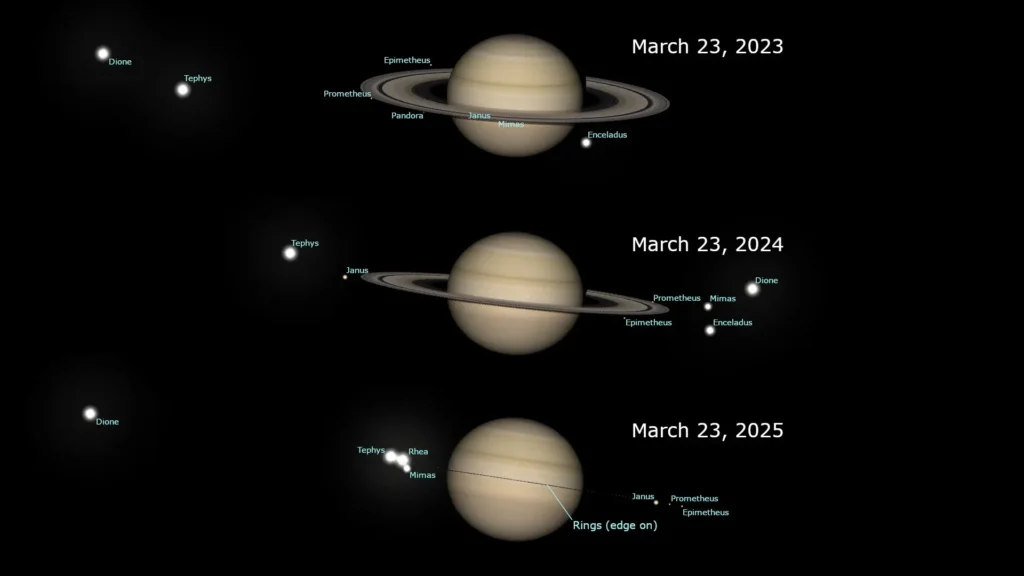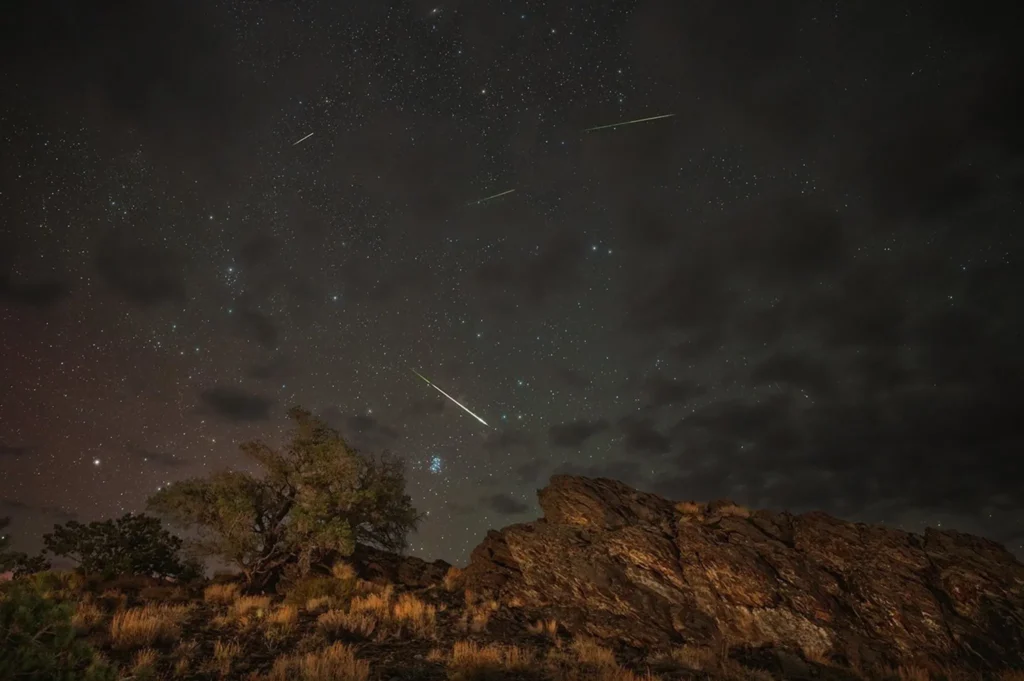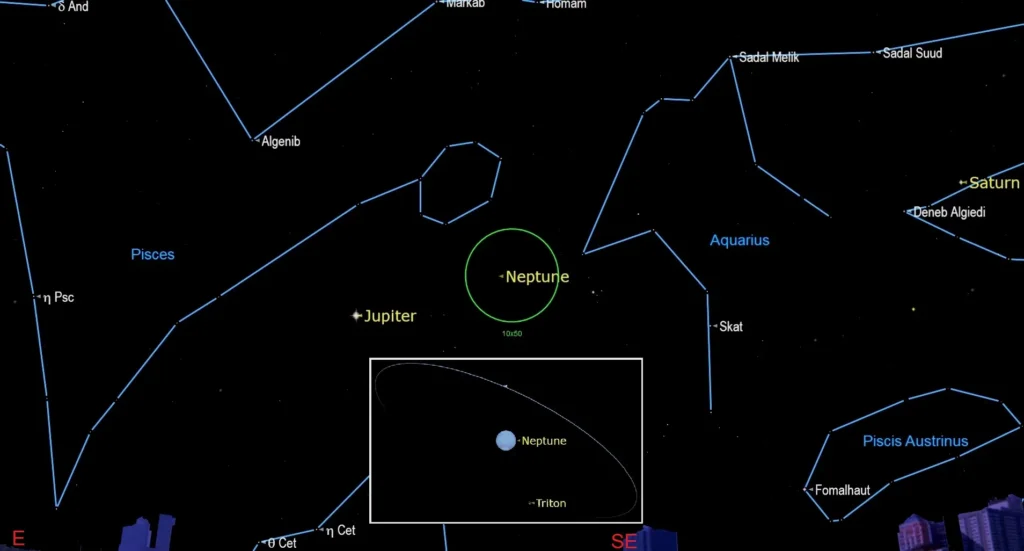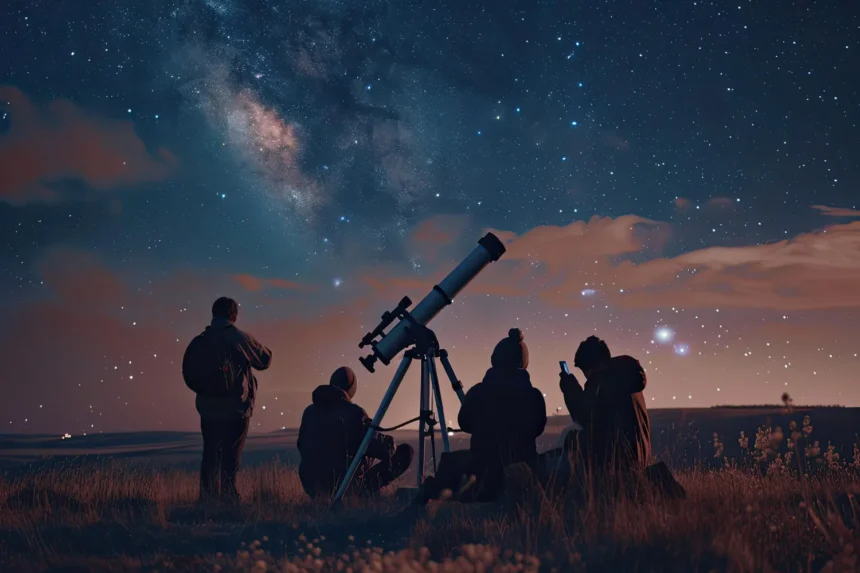Introduction
As we move through 2025, the sky above promises a stunning lineup of upcoming astronomical events that skywatchers across the U.S. won’t want to miss. From dramatic lunar eclipses to meteor showers and rare planetary alignments, these celestial occurrences offer breathtaking views and educational insights into the cosmos. March kicks off the season with several standout events, including a total lunar eclipse and the unusual vanishing of Saturn’s rings.
Whether you’re a dedicated astronomer or a casual night-sky admirer, now’s the perfect time to mark your calendar. In this guide, we’ll walk you through the key astronomical events 2025 has in store from March onward—when and where to look, what to expect, and how to view them safely and effectively.
Read More: How It Feels to Levitate in Space: A Mind-Blowing Experience Beyond Earth in 10 Minutes
Upcoming Astronomical Events from March 2025 Onwards
◉ March 2025 Highlights
March 14: Total Lunar Eclipse
On March 14, 2025, skywatchers across North and South America will witness a total lunar eclipse. During this event, the Earth positions itself directly between the Sun and the Moon, casting a shadow that envelops the Moon in a reddish hue, often referred to as a “Blood Moon.”
The eclipse will commence late on March 13 and extend into the early hours of March 14, with totality lasting approximately 66 minutes. Observers are encouraged to find a location with an unobstructed view of the sky to fully experience this phenomenon.
Read More: Don’t Miss the Total Lunar Eclipse 2025: Nature’s Epic Light Show
March 20: Vernal Equinox
The vernal equinox, occurring on March 20, 2025, at 5:01 a.m. EDT, marks the official beginning of spring in the Northern Hemisphere. On this day, the Earth’s equator aligns directly with the Sun, resulting in nearly equal lengths of day and night across the globe.
This astronomical event has been celebrated by various cultures throughout history, symbolizing renewal and balance.
Read More: Difference Between a Solstice and an Equinox: 3 Easy Facts to Remember
March 23: Saturn’s Rings Disappear
A rare and intriguing event will occur on March 23, 2025, when Saturn’s rings will appear edge-on from Earth’s perspective, causing them to seemingly vanish. This phenomenon, known as a ring-plane crossing, happens approximately every 15 years as Saturn’s tilt relative to Earth changes during its orbit.
While the rings may be challenging to observe during this alignment, it’s an excellent opportunity to study Saturn’s moons, which become more prominent without the bright rings overshadowing them.

Read More: Surprising Secrets: Lesser-known facts about planets and moons
March 29: Partial Solar Eclipse
On March 29, 2025, a partial solar eclipse will grace the skies, offering a celestial show to observers in parts of the northeastern United States, eastern Canada, Greenland, Europe, Northwest Africa, and northwestern Russia. During this event, the Moon will obscure a portion of the Sun, creating a striking visual effect.
It’s crucial to use proper eye protection, such as eclipse glasses that conform to ISO 12312-2:2015 standards, to safely enjoy this spectacle and prevent eye damage.
Read More: March 29 Solar Eclipse: A Guide to Viewing the Rare Sunrise Event from North America
◉ Notable Meteor Showers
April 22: Lyrid Meteor Shower
The Lyrid meteor shower, active annually from April 16 to 25, is expected to peak on the night of April 22, 2025. Known for producing bright meteors with persistent trails, the Lyrids can offer up to 20 meteors per hour under optimal conditions.
In 2025, the Moon will be only slightly illuminated, providing favorable viewing conditions. To best experience the Lyrids, find a dark location away from city lights and allow your eyes to adjust to the darkness.
May 6: Eta Aquariid Meteor Shower
Originating from Halley’s Comet, the Eta Aquariid meteor shower is renowned for its swift meteors and high activity rates in the Southern Hemisphere. In 2025, the shower is expected to peak around May 6. However, the Moon will be mostly illuminated during this period, which may hinder visibility.
Observers in the Southern Hemisphere will have the best views, but those in the Southern United States may still catch a glimpse of this celestial display in the pre-dawn hours.
Read More: Water Beyond Earth: How the Universe Created Water Before Our Planet Existed
August 12: Perseid Meteor Shower
The Perseid meteor shower, one of the most anticipated annual celestial events, is set to peak around August 12, 2025. Known for its prolific meteor production and bright fireballs, the Perseids can produce up to 100 meteors per hour under ideal conditions.
Unfortunately, in 2025, the Moon will be almost full during the peak, potentially reducing visibility. Nonetheless, the Perseids are renowned for their bright meteors, which may still be visible despite the moonlight.

December 14: Geminid Meteor Shower
The Geminid meteor shower, considered one of the most reliable and spectacular meteor showers, is expected to peak on the night of December 14, 2025. The Geminids are unique in that they originate from an asteroid, 3200 Phaethon, rather than a comet.
In 2025, the Moon will be about one-third illuminated during the peak, which could partially reduce visibility. However, the Geminids’ bright and frequent meteors make this shower a must-see event.
Read More: Asteroid Detectors: A Key Technology to Protect Earth from Potential Impacts
◉ Planetary Events
April 21: Mercury at Greatest Elongation
On April 21, 2025, Mercury will reach its greatest eastern elongation, meaning it will appear at its farthest point from the Sun in the evening sky. This positioning offers one of the best opportunities to observe the elusive planet, which is often lost in the Sun’s glare. Look for Mercury low in the western sky shortly after sunset.
August 12: Venus and Jupiter Conjunction
On August 12, 2025, skywatchers will be treated to a spectacular conjunction of Venus and Jupiter. These two brightest planets will appear exceptionally close in the early morning sky, separated by just 0.9 degrees. Approximately one hour before sunrise, look towards the east-northeast horizon to witness this dazzling duo.
The conjunction will be visible to the naked eye, offering a striking visual display. For enhanced viewing, especially to discern any accompanying moons or atmospheric details, using binoculars or a small telescope is recommended.
Read More: Biggest Planet in Our Solar System – Discover 9 Mind-blowing Facts about Jupiter
September 21: Saturn at Opposition
Saturn will reach opposition on September 21, 2025, positioning itself directly opposite the Sun from Earth’s perspective. During this period, Saturn will be at its closest approach to Earth, shining at a magnitude of 0.6, its brightest for the year. The planet will rise in the east at sunset and remain visible throughout the night, offering ample opportunity for observation.
Notably, Saturn’s rings will appear nearly edge-on, making them challenging to observe. However, this alignment provides a unique chance to study Saturn’s atmospheric features and its moons.
September 23: Neptune at Opposition
Neptune will be in opposition on September 23, 2025, making it the best time to observe this distant ice giant. Shining at a magnitude of 7.8, Neptune will be visible all night in the constellation Pisces. Due to its distance and faintness, observing Neptune requires at least a good pair of binoculars or a telescope.
Around opposition, Neptune will be at its closest to Earth for the year, approximately 28.9 astronomical units away. For those equipped with a medium-sized telescope, Neptune’s largest moon, Triton, may also be visible.

Read More: Uncovering the Hidden Wonders: 7 Unique Planets in Our Solar System
◉ Additional Celestial Events
September 22: September Equinox
The September equinox occurs on September 22, 2025, marking the beginning of autumn in the Northern Hemisphere and spring in the Southern Hemisphere. On this day, day and night are approximately equal in length. The equinox is a result of Earth’s axial tilt and its orbit around the Sun, leading to nearly equal illumination of both hemispheres.
Read More: What’s Inside the Pyramid of Chichén Itzá? 5 Astonishing Secrets Revealed
November 21: Uranus at Opposition
Uranus will reach opposition on November 21, 2025, shining at a magnitude of 5.6. During this time, Uranus will be visible all night in the constellation Taurus. While theoretically visible to the naked eye under dark skies, using binoculars or a telescope will provide a clearer view of this distant planet. Opposition marks the point when Uranus is closest to Earth, offering optimal viewing conditions.
Conclusion
The upcoming astronomical events from March 2025 onwards present a rich tapestry of celestial phenomena for enthusiasts and casual observers alike. From mesmerizing meteor showers and dramatic eclipses to rare planetary alignments and oppositions, the night sky offers numerous opportunities to deepen our connection with the cosmos.
To fully appreciate these events, consider planning your observations in advance, seeking out dark-sky locations, and utilizing appropriate equipment such as telescopes or binoculars. Remember to prioritize safety, especially during solar observations, by using proper eye protection.
Engaging with local astronomy clubs or online communities can also enhance your stargazing experience, providing insights and shared enthusiasm for the wonders of the universe.
Key Takeaway: Mark your calendars and prepare to witness the upcoming astronomical events of 2025, as the cosmos unfolds its spectacular displays above.
FAQs
1. When is the best time to view Saturn in 2025?
Saturn will be at opposition on September 21, 2025, offering optimal viewing conditions.
2. Will the Perseid meteor shower be visible in 2025?
Yes, the Perseids will peak around August 12, 2025, though moonlight may affect visibility.
3. What is a planetary conjunction?
A conjunction occurs when two planets appear very close together in the sky from Earth’s perspective.
4. How can I safely observe a solar eclipse?
Always use ISO-certified eclipse glasses or indirect viewing methods to protect your eyes.
5. Is it possible to see Neptune without a telescope?
Neptune is too faint for naked-eye observation; a telescope is necessary to view it.

